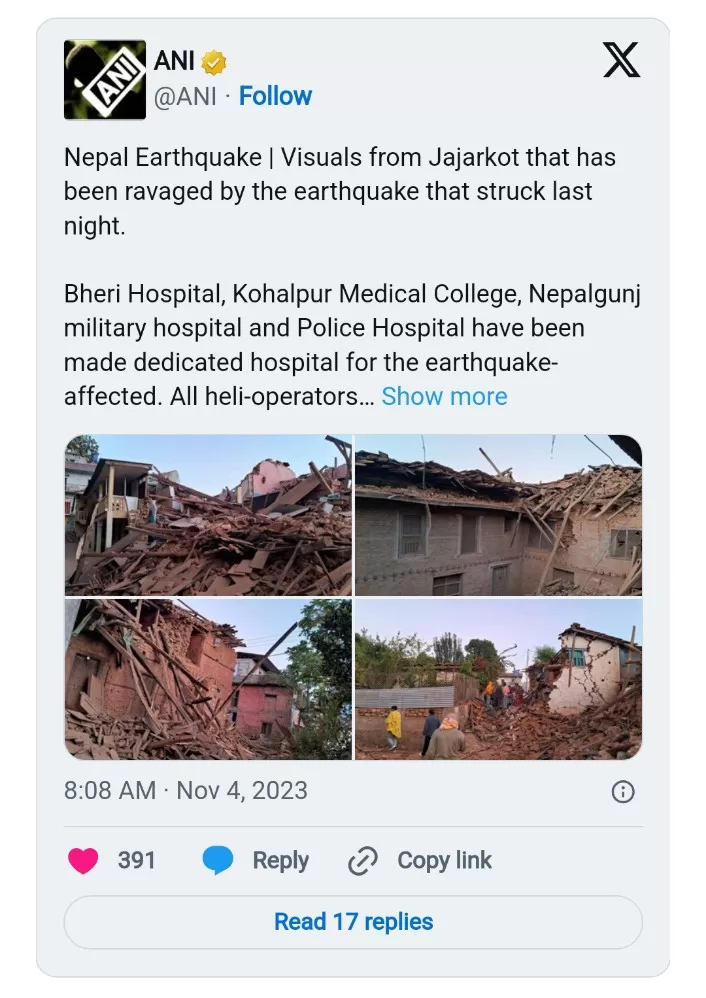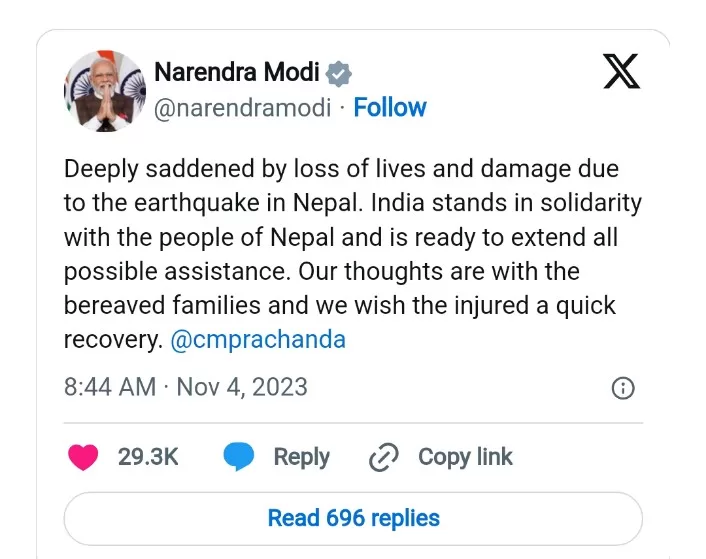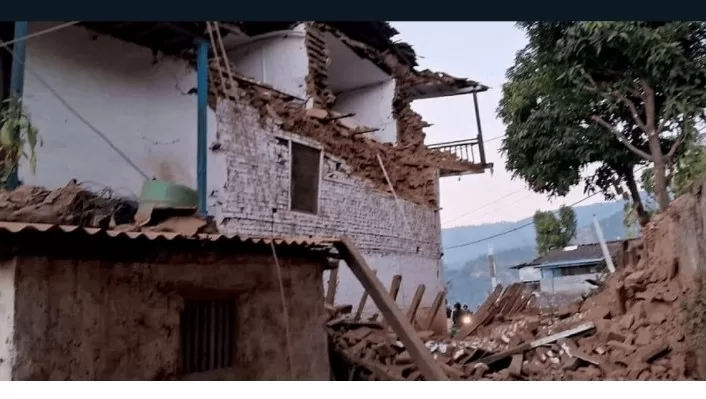Nepal – A devastating earthquake, registering a magnitude of 5.6, struck a remote region in the far west of Nepal late Friday evening. The tremor, which originated just 18 kilometers beneath the Earth’s surface, resulted in a tragic loss of at least 132 lives, according to officials. The disaster prompted an urgent response from security forces, who swiftly mobilized for search and rescue operations.
The quake’s impact was felt as far away as India’s capital, New Delhi, situated nearly 500 kilometers from the quake’s epicenter, located 42 kilometers south of Jumla. Disturbing images and videos shared on social media depicted locals courageously sifting through debris in darkness, striving to extract survivors from the ruins of collapsed structures.
Mud houses were either leveled or suffered significant damage, compelling survivors to seek refuge outdoors as the sirens of emergency vehicles resonated through the distressed air. 
Jajarkot and Rukum, two districts in Nepal, bore the brunt of the disaster, with 92 lives tragically lost in Jajarkot and 40 in Rukum. Furthermore, over 100 individuals sustained injuries across these affected districts, as per National Police Spokesman Kuber Kathayat.
Given the remote nature of the afflicted areas, communication was hampered, and roads were blocked by quake-induced damage. Authorities are striving to reach the affected regions via alternate routes, while the district hospital found itself inundated with residents seeking treatment for the injured.
Nepalese Prime Minister Pushpa Kamal Dahal visited the site of the disaster on Saturday, expressing profound sorrow over the human and physical toll exacted by the earthquake.
Across the border, Indian Prime Minister Narendra Modi conveyed his deep sadness and extended India’s solidarity with Nepal, offering to provide any necessary assistance.

Nepal, situated atop a major geological faultline, experiences frequent seismic activity, given the convergence of the Indian tectonic plate into the Eurasian plate, which forms the imposing Himalayan mountain range. In 2015, Nepal endured a catastrophic 7.8-magnitude earthquake that claimed nearly 9,000 lives and left over 22,000 individuals injured. The disaster resulted in the destruction of more than half a million homes and nearly 8,000 schools, leaving almost one million children without access to education.
Tourism, a vital sector for Nepal’s economy, was severely impacted as the earthquake razed hundreds of monuments and royal palaces, including UNESCO World Heritage sites in the Kathmandu Valley, which had long captivated visitors from around the globe.
Last year, Nepal faced another earthquake, resulting in six casualties, when a 5.6-magnitude tremor struck Doti district near Jajarkot.
Indian social media users reported feeling the recent quake in northern cities such as Lucknow and Patna. A subsequent aftershock, measuring 4.0 in magnitude, shook the same region several hours later, as reported by the US Geological Survey.






